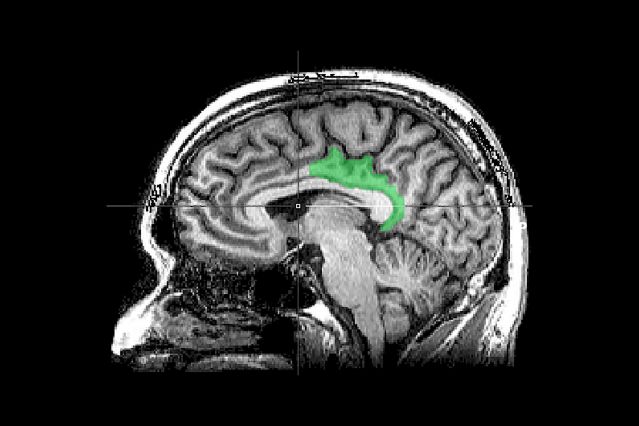Trauma
How the Brain Stores Traumatic Memories
A conversation with neuroscientist Daniela Schiller.
Updated October 19, 2024 Reviewed by Jessica Schrader

This is Part 1 of a three-part interview.
Does the brain encode traumatic memories differently than it does other memories? This question prompted a recent series of experiments by a group of researchers at Yale University and the Icahn School of Medicine at Mount Sinai. The publication of their breakthrough findings in Nature Neuroscience[1] in November generated news media headlines.[2] To learn more about these findings, I interviewed one of the authors of the study, Daniela Schiller, professor of neuroscience and professor of psychiatry at the Icahn School of Medicine at Mt. Sinai and Director of the Schiller Laboratory of Affective Neuroscience. In 2014, The New Yorker did an extensive profile[3] of Dr. Schiller’s achievements in memory research.
Dale Kushner: Is it accurate to say your goal is to untangle a traumatic memory from the strong emotion it evokes so that a person might be able to remember something traumatic but not feel its negative effect?

Daniela Schiller: Yes. That's the ultimate goal. The way to go about it is to ask questions about how to understand the mechanism: how the brain forms emotional memories, how it maintains these memories. Are these memories malleable? Do they change over time? Under what conditions do you retrieve them, in what way? To prevent the malfunctioning of it or the negative impact of it in certain cases you try to understand the entire mechanism of it. How does it work in the brain before it goes awry? And then what might change that it has such a negative impact?
DK: Could you briefly describe what you're looking at now and how that unfolds for you in the lab?
DS: Sure. Here you have two main approaches. One will be the very, very controlled way that you create some experience in the laboratory and then you test it. For fear or for emotional memory, we can use this basic process that is called classical or Pavlovian conditioning, where you take one stimulus and associate it with something negative. That stimulus that used to be neutral is now negative. This you can do in the lab. You just present something on the computer, and they can get a mild electric shock, or they can lose money, something negative. They then develop this emotional response to the stimulus because they know that something negative is going to happen. When you look at that in the FMRI (functional magnetic resonance imaging) scanner, you can see specific responses in the brain to that stimulus before and after learning, or in comparison to other such stimuli, or such cues.
Another approach is to investigate memories that the participants themselves bring. This is what we did in the research that was just published. The participants had been diagnosed with PTSD and they had their own real life traumatic memories and also sad memories. We reminded them of these memories while they were in the FMRI scanner, and we then looked at the brain. So, we found a way to analyze that very naturalistic experience and real-life memory. And of course, this is personal. In classical conditioning, everybody undergoes the same stimulus. All the participants look at a blue square paired with a shock. Then we'll see in the entire group on average how the brain is reacting. With the PTSD group we see each and every individual brain reacting to the personal memory, but we still find commonalities. And these commonalities tell us what is different between traumatic memories and sad memories.
DK: That's very interesting. So, the participants in the first group who have not had PTSD, you've induced some kind of shock so that you have a parameter of what an untraumatized person might experience when they are initially getting traumatized in the laboratory. Then you compare that to someone who comes to you with a history of trauma and look for the same things. Then you compare the responses and figure out how the brain is working in both cases. Is that accurate?
DS: Yes. What you're describing is a challenge to the field because we really cannot induce trauma in the lab. What you have in the laboratory is a model, something that mimics aspects of trauma. With animals, you would do an animal model, an animal will undergo something negative, and then they will be afraid. In humans, you can do the same, but what you do in this case is you're asking questions about basic learning and memory processes in the brain. And by understanding these processes, which are in the neurotypical, in the healthy realm, by understanding these, you assume that when these systems are impaired or you can envision or try to manipulate the impairments, then you can hypothesize what is happening in the traumatic state. In this case, it's more like an extrapolation or an assumption that it would apply to trauma.
That's why our last experiment was exactly to address that issue or those assumptions. Is it true that very simple emotional processes by way of exaggeration become traumatic, or is it a whole alternative process? It can either be an extension or really a dissociation. It's a challenge to study trauma in the lab.
DK: Yes. I bet. So, what are your findings on that question so far?
DS: My understanding now is that it's really both. It depends on what you're asking. You can see these basic processes in relation to emotional stimuli that are not a traumatic event. You could still see impairment in the aftermath of trauma because for example, people with PTSD would be more sensitive to negative information or some negative surprise or the way they compute and interact with emotional stimuli. You do see changes at the basic level. So that approach is very informative. In addition, when we look at the specific individual personal traumatic memory, we did see a difference between the traumatic memory and a sad memory. It wasn’t just more of an exaggeration of it, which in the brain you would see as more activation, more impact. It really looked like an alternative path of representation. This stayed virgin between the two memories. So, I think both are occurring at the same time. I hope that makes sense.
DK: Yes, it does. And it gives me a sense of what clinicians are dealing with and going to have to deal with. This research is going to be applicable and so crucial for coming generations.
References
[1] O. Perl, O. Duek, K. Kulkarni, C. Gordon, J. H. Krystal, I. Levy, I. Harpax-Rotem, D. Schiller, “Neural patterns differentiate traumatic from sad autobiographical memories in PTSD,” Nature Neuroscience, 26, 2226-2236 (2023); Published November 30, 2023.
[2] Barry, Ellen, “Brain Study Suggests Traumatic Memories Are Processed as Present Experience,” The New York Times, November 30, 2023.
[3] Specter, Michael, “Partial Recall,” The New Yorker, May 12, 2014.


